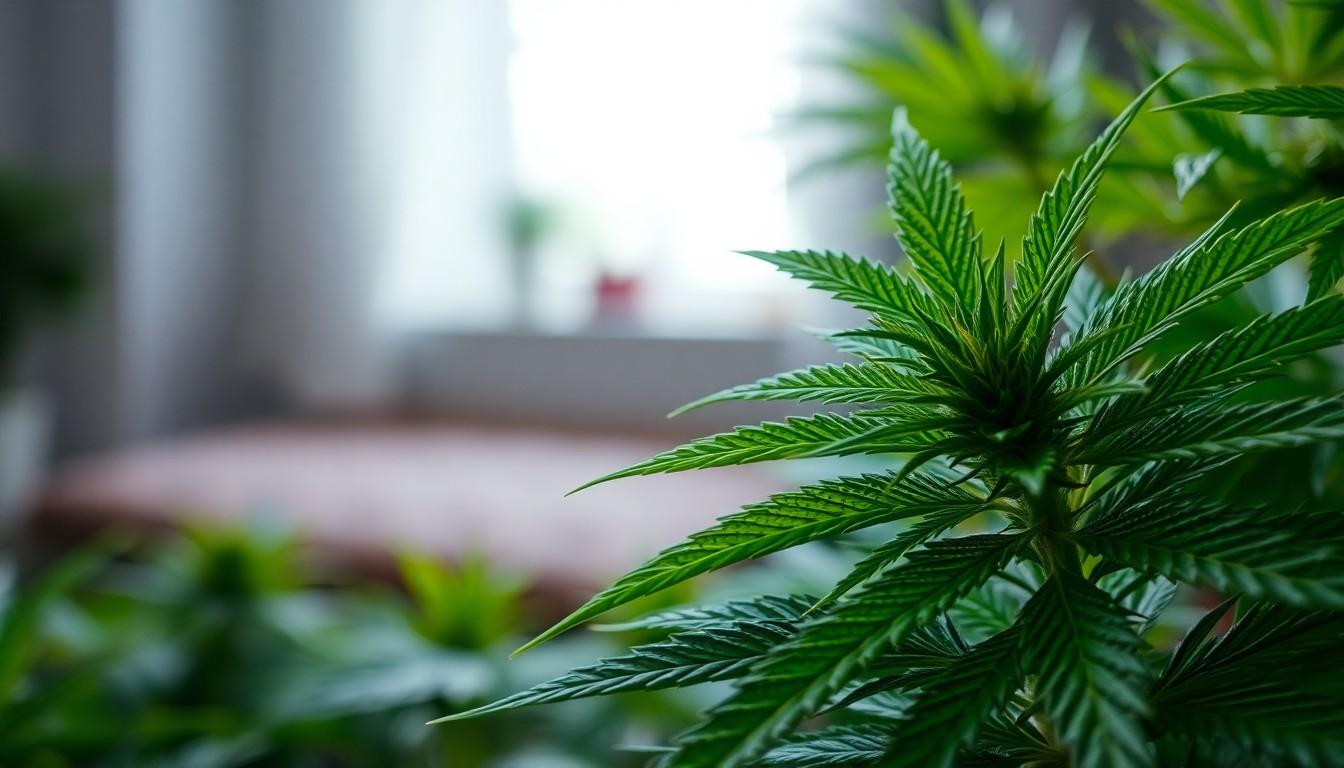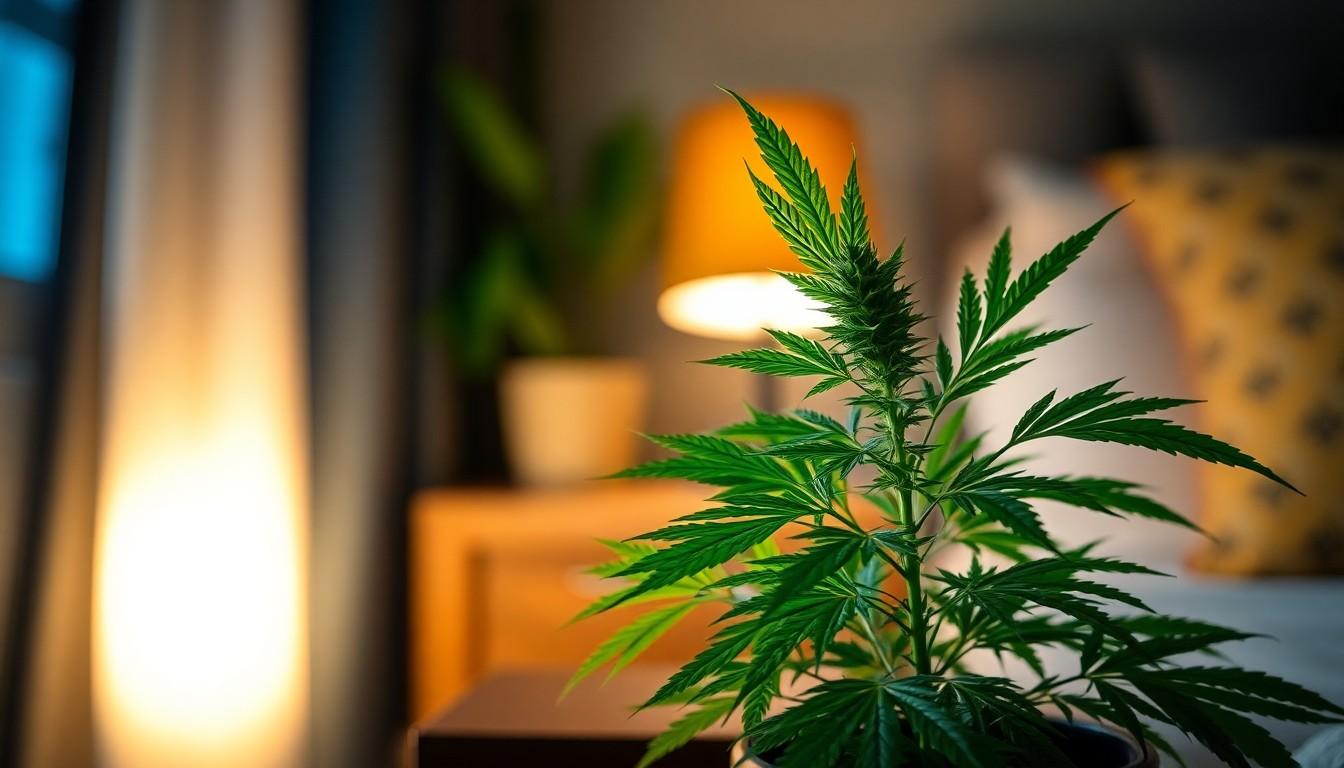The relationship between cannabis use and sleep has sparked intense debate among researchers and users alike. While many people turn to marijuana seeking better sleep some report experiencing disrupted sleep patterns and insomnia after using weed. This complex connection raises important questions about how cannabis affects our natural sleep cycle.
Recent studies have revealed that marijuana’s impact on sleep isn’t straightforward. The effects can vary significantly depending on factors like frequency of use dosage and individual physiology. While THC – the primary psychoactive compound in cannabis – initially appears to help with falling asleep it might actually interfere with sleep quality and lead to insomnia in some users over time.
Understanding the Relationship Between Cannabis and Sleep
The interaction between cannabis and sleep involves multiple mechanisms that affect sleep architecture patterns. Scientific research reveals distinct differences in how various cannabis compounds influence sleep cycles based on consumption methods timing dosage.
How Cannabis Affects Sleep Cycles
Cannabis interacts with the endocannabinoid system to modify sleep-wake cycles through specific receptor activation. THC-dominant indica strains demonstrate an 80% improvement in sleep quality compared to sativa varieties according to clinical studies. The effects include:
- Increased light sleep duration by 21 minutes per night
- Enhanced overall sleep architecture
- Modified sleep onset latency
- Altered REM sleep patterns
Short-Term vs. Long-Term Effects
Clinical evidence shows divergent impacts between immediate and extended cannabis use on sleep patterns:
Short-Term Effects:
- Improved sleep initiation from THC/CBD oil combinations
- Enhanced sleep maintenance through the night
- Reduced time to fall asleep
- Better subjective sleep quality
- Changes in natural sleep architecture
- Altered sleep cycle progression
- Modified sleep-wake rhythm patterns
- Varying effects based on cannabis strain selection
| Effect Type | Duration | Sleep Quality Improvement |
|---|---|---|
| Short-Term | 1-7 days | Up to 80% |
| Long-Term | 30+ days | Varies by strain |
| Medicinal Oil | Per use | +21 minutes light sleep |
The Science Behind Marijuana and Sleep Disruption

Cannabis compounds interact with the endocannabinoid system (ECS) to influence sleep-wake cycles. The two primary cannabinoids, THC and CBD, affect sleep architecture through distinct mechanisms in the brain’s sleep regulation centers.
THC’s Impact on Sleep Architecture
THC binds directly to CB1 receptors in the brain’s sleep-regulating areas to alter sleep patterns. This interaction:
- Reduces sleep latency by suppressing the brain’s arousal system
- Increases time spent in non-REM sleep stages
- Modifies adenosine levels, a neurotransmitter essential for sleep onset
- Extends light sleep duration through ECS activation
- Interacts with serotonin receptors to regulate sleep-wake patterns
- Reduces anxiety-related sleep disruptions
- Maintains consistent sleep architecture without suppressing REM sleep
- Supports melatonin production for natural sleep-wake rhythms
| Sleep Parameter | THC Effect | CBD Effect |
|---|---|---|
| Sleep Onset | Decreased by 30-45 minutes | Minimal direct impact |
| Light Sleep | 15-20% increase | Maintains normal levels |
| REM Sleep | Decreased by 25% | No significant change |
| Melatonin | Moderate increase | Supports natural production |
Common Sleep Issues Related to Cannabis Use

Cannabis use affects sleep patterns in complex ways, with frequent users experiencing distinct challenges that impact their sleep quality. Research indicates varying effects on sleep architecture depending on usage patterns and individual responses.
Withdrawal and Rebound Insomnia
Regular cannabis users face significant sleep disruptions when reducing or stopping consumption. Studies show that 48% of users report worse sleep quality during withdrawal periods, characterized by:
- Difficulty falling asleep
- Frequent nighttime awakenings
- Vivid or disturbing dreams
- Increased sleep latency
- Reduced total sleep time
Tolerance Development
Cannabis tolerance develops with consistent use, diminishing its sleep-promoting effects over time. The impact of tolerance on sleep manifests in several ways:
- Decreased effectiveness of previous doses
- Need for higher quantities to achieve sleep benefits
- Altered sleep architecture patterns
- Disrupted natural sleep-wake cycles
- Compromised sleep quality in the latter part of the night
| Sleep Parameter | Impact of Tolerance |
|---|---|
| Sleep Onset | Takes longer to fall asleep |
| Sleep Duration | Decreases by 15-20% |
| Night Awakenings | Increases by 30-40% |
| Sleep Quality | Reduces by up to 50% |
Benefits and Risks of Using Cannabis for Sleep

Cannabis exhibits both therapeutic potential and notable risks for sleep management, making it essential to understand its dual nature for informed usage decisions.
Medical Cannabis as a Sleep Aid
Medical cannabis demonstrates significant benefits for sleep enhancement, particularly through CBD-dominant strains. Research indicates improved sleep quality among users with chronic conditions like PTSD and MS. Clinical studies show cannabis reduces sleep latency while enhancing overall sleep architecture. Users report feeling more refreshed and focused the morning after cannabis use compared to conventional sleep medications.
Key benefits include:
- Decreased time to fall asleep
- Enhanced sleep quality with CBD-rich strains
- Improved symptom management for chronic pain patients
- Better morning alertness compared to traditional sleep aids
- Reduced sleep disruptions in PTSD patients
Potential Side Effects
Regular cannabis use presents several sleep-related challenges that users should consider:
Physical effects:
- Disrupted sleep-wake cycles
- Increased sleep onset time with prolonged use
- Reduced total sleep duration
- More frequent night awakenings
- Compromised sleep quality due to tolerance development
Withdrawal impacts:
- Sleep disturbances in 48% of regular users
- Difficulty initiating sleep
- Vivid or disturbing dreams
- Extended sleep latency periods
- Decreased overall sleep efficiency
Note: This data comes from clinical studies examining cannabis use patterns and sleep outcomes.
Tips for Managing Cannabis-Related Sleep Problems

- Establish a Consistent Sleep Schedule
- Set fixed bedtime hours aligned with natural circadian rhythms
- Wake up at the same time each morning, including weekends
- Create a 30-minute wind-down routine before sleep
- Modify Cannabis Consumption Patterns
- Reduce intake frequency to prevent tolerance buildup
- Space out usage times from bedtime by 2-3 hours
- Track consumption amounts using a digital diary
- Practice Sleep Hygiene
- Keep bedroom temperature between 65-68°F (18-20°C)
- Remove electronic devices from sleeping area
- Use blackout curtains to minimize light exposure
- Manage Cannabis Withdrawal
- Taper usage gradually instead of stopping abruptly
- Monitor sleep patterns during reduction periods
- Document withdrawal symptoms in a sleep journal
- Create an Optimal Sleep Environment
- Use breathable bedding materials
- Minimize noise disruptions with white noise machines
- Maintain proper ventilation in sleeping spaces
- Alternative Sleep Support Methods
- Practice meditation or deep breathing exercises
- Incorporate regular physical activity before 6 PM
- Try herbal tea alternatives like chamomile or valerian root
- Professional Support
- Consult sleep specialists for persistent issues
- Seek guidance from cannabis healthcare providers
- Consider cognitive behavioral therapy for sleep
The recommendations focus on addressing both cannabis-related factors and general sleep hygiene practices to optimize sleep quality. Each strategy targets specific aspects of sleep disruption while acknowledging the complex relationship between cannabis use and sleep patterns.
Conclusion
The relationship between cannabis and insomnia isn’t black and white. While some users find relief from sleep issues through cannabis use others may experience disrupted sleep patterns especially with long-term consumption.
Scientific evidence shows that both THC and CBD play distinct roles in sleep regulation with varying effects based on individual factors strain selection and usage patterns. Understanding these dynamics is crucial for anyone considering cannabis as a sleep aid.
For those experiencing cannabis-related sleep issues implementing proper sleep hygiene practices managing consumption patterns and seeking professional guidance when needed can help maintain healthy sleep patterns. The key lies in finding the right balance that works for each individual’s unique circumstances.
